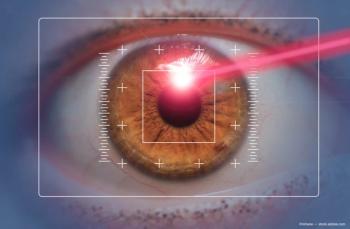
A recipe for the perfect hAM graft
Daraius Shroff, MD, developed the Triple S toolkit for hAM grafting for use during vitreoretinal surgery, which he described at the 2023 Vit-Buckle Annual Society meeting.
Human amniotic membrane transplantation (hAM) always held a fascination for macular hole repair for Daraius Shroff, MD, from the Shroff Eye Centre, New Delhi, India.
He attempted the technique several times, but faced difficulties performing the procedure.
Specifically, he found the thin, translucent tissue difficult to see extraocularly in all cases and intraocularly in high myopes because of the poor contrast. Sizing of the tissue was difficult, ie, irregular and arbitrary, which resulted in grafts that were less than optimal. Finally, the placement of the graft was problematic in that it stuck to the forceps and was difficult to position accurately, some force was required to push it onto the macular hole which was associated with potential damage to the retinal pigment epithelium.
To work around these problems, he developed the Triple S toolkit for hAM grafting for use during vitreoretinal surgery, which he described at the 2023 Vit-Buckle Annual Society meeting.
Staining, sizing, sliding
He showed in a video a work-around hack to circumvent each of the problems that he encountered previously during macular hole surgery to make the grafting easy to accomplish.
The thin, white, translucent tissue was readily visualized when a few drops of Brilliant Blue dye were applied to it.
The graft size was determined using inexpensive, disposable trephines. The optimal graft size was determined with a formula: optimal graft size = (MLD + BD)/2, where MLD is the minimal linear diameter and BD the base diameter.
These parameters are measured preoperatively on optical coherence tomography B-scans. “Following some trial and error, we found that the optimal graft size is roughly the average of the sum of the MLD and the BD divided by 2,” he commented.
Sliding is accomplished using an atraumatic bimanual sliding technique. Accurately placing the hAM graft without causing damage is a major challenge, Dr. Shroff said.
He uses a tano brush and a flexible nitinol loop to accurately position the graft; the surgical site is illuminated using a chandelier.
He described complicated cases in which the hAM procedure was used and the macular holes successfully closed.
“With the Triple S technique, we provide you with our recipe to achieve the perfect hAM graft during vitreoretinal surgery,” Dr. Shroff concluded.
Newsletter
Don’t miss out—get Ophthalmology Times updates on the latest clinical advancements and expert interviews, straight to your inbox.
















































.png)


